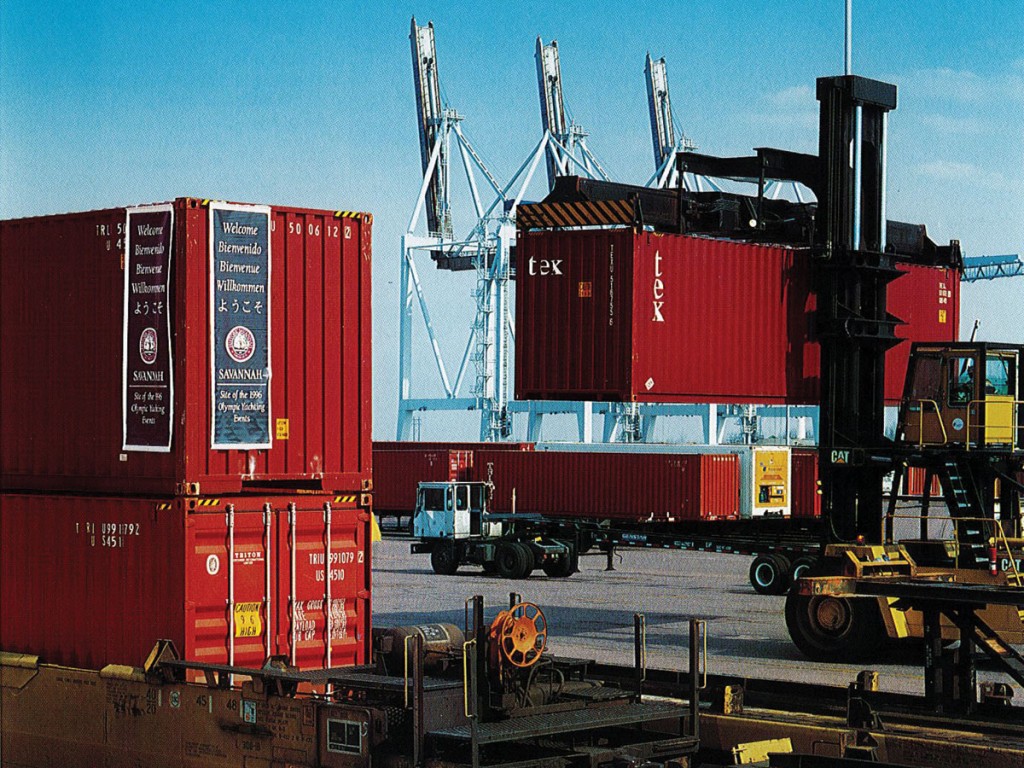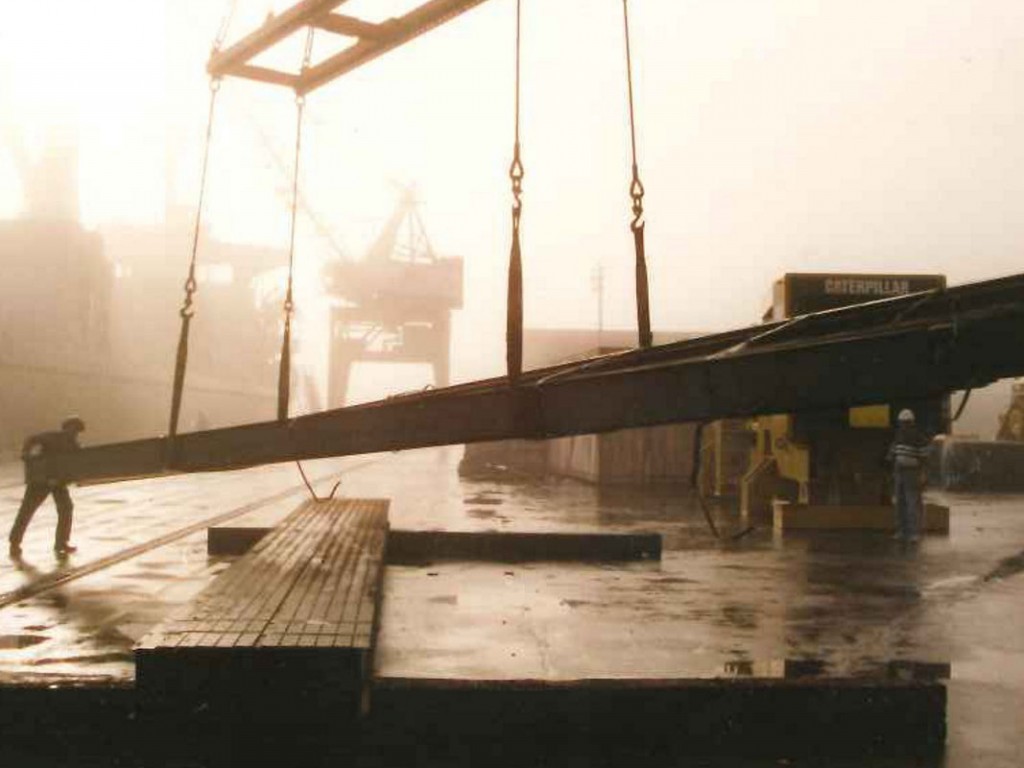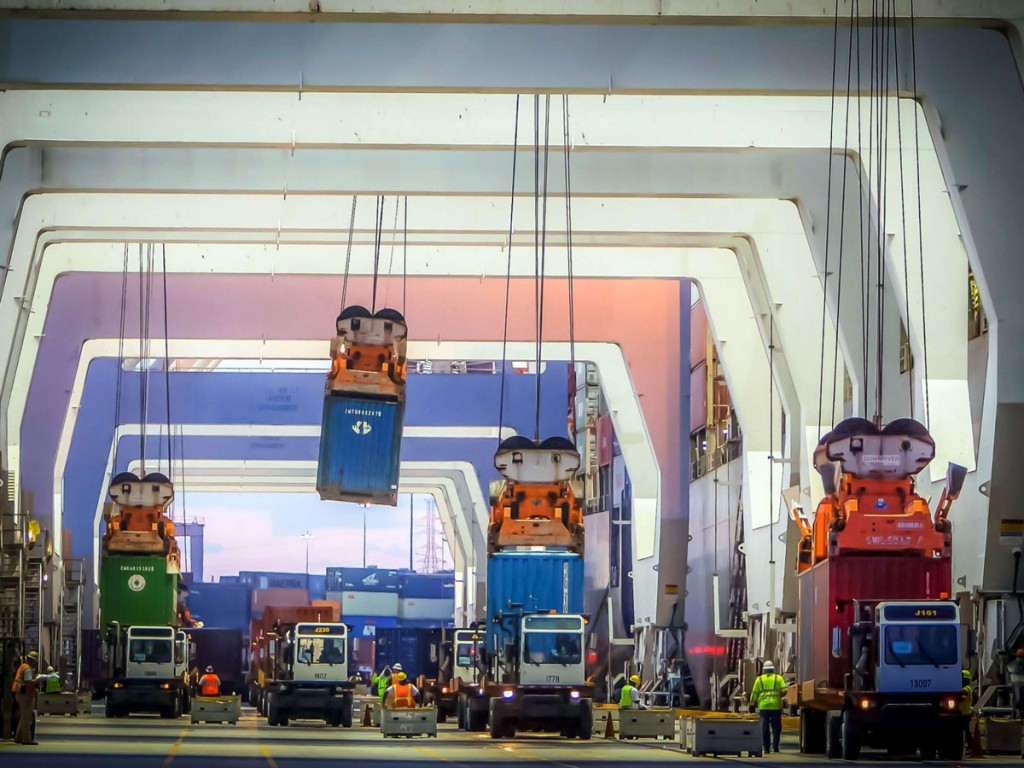Over the past three quarters of a century, the Georgia Ports Authority has developed a premier hub for international commerce, proficiently serving customers throughout the world while growing its valued role as a major contributor to the economic wellbeing of the Peach State.

Here, by years, are some of the key developments in the GPA’s 75-year history:
• 1948 – The GPA acquires land on the Savannah River in Garden City, creating Garden City Terminal to handle bulk and general cargos and, later, containerized cargo.
• 1953 – Garden City Terminal officially opens, with four general cargo berths, two 35-ton gantry cranes, three transit sheds and one tanker berth. By end of year, the terminal handles 232,920 tons of dry and liquid bulk, servicing 46 vessels.
• 1956 – Georgia Gov. Marvin Griffin signs a bill to make Brunswick and Bainbridge state ports.
• 1957 – The Georgia Legislature approves more than $8 million for state ports.
• 1958 – Ocean Terminal is purchased from the Central of Georgia Railway, to later become a roll-on/roll-off terminal, primarily handling automobiles and wheeled heavy equipment.
• 1959 – The state purchases Whitehall Plantation for port expansion.
• 1960 – State docks at Brunswick are dedicated.
• 1961 – A $16 million port expansion plan is revealed, with Savannah facilities getting the lion’s share of the money.
• 1962 – Georgia Gov. Ernest Vandiver dedicates improvements at Savannah’s Ocean Terminal. Also, three new berths are put into operation at Garden City Terminal and GPA purchases Colonel’s Island in Brunswick for $1.1 million.
• 1963 – Savannah is ranked No. 2 among U.S. East Coast ports, behind only Norfolk, Virginia. At Brunswick’s East River Terminal, a $15 million second berth and transit shed open.
• 1965 – A dockworker strike shuts down shipping in the early part of the year. The first containerized cargo crosses GPA docks.
• 1966 – A joint effort is established between state and federal governments to widen and deepen the Savannah channel, with more than $28 million committed.
• 1967 – The port is ranked 10th in the nation for handling general cargo.
• 1969 – Container Berth 1 construction begins at Garden City Terminal.
• 1970 – Savannah is ranked No. 6 among U.S. ports; a new terminal opens.
• 1971 – The Port of Savannah is selected as a main entry point for S.S. Kresge Co., later renamed Kmart Corp.
• 1972 – The first Savannah container terminal opens and container service with Japan begins, while a second container terminal is planned.
• 1975 – A master dispatch center at Garden City terminal opens, serving all agents, lines, receivers, shippers and others.
• 1977 – Plans are made to widen the Savannah harbor by 100 feet.
• 1980 – A 175-ton-capacity gantry crane plus a 100-ton-capacity unit are procured for use at Ocean Terminal.
• 1982 – Rumblings begin about the low clearance of the Tallmadge Bridge costing potential business.
• 1983 – A new COBRA system comes online, facilitating efficient paperless entries.
• 1984 – The American New York, the world’s largest containership at the time, with a capacity of 4,000 twenty-foot-equivalent units, or TEUs, calls Savannah.
• 1985 – The GPA purchases the 2,200-acre Drakies Plantation just northwest of Savannah.
• 1988 – BMW of North America opens a $4.5 million vehicle preparation center on Colonel’s Island in Brunswick.
• 1990 – In August, the port moves equipment on ships for Operation Desert Shield.
• 1991 – A new, higher Tallmadge Bridge opens in March, offering 185 feet vertical clearance and 500 feet horizontal clearance.
• 1992 – The harbor at the Port of Savannah is widened to 500 feet.
• 1993 – Saturn begins vehicle exports through the Port of Brunswick’s Colonel’s Island facility.
• 1994 – Land Rover begins imports through Colonel’s Island Terminal.

• 1995 – The Port of Savannah is chosen as primary port of entry for the 1996 centennial Summer Olympics.
• 2000 – In January, Dollar Tree chooses Savannah for development of a new distribution and shipping center. In June, Maersk Sealand signs a contract with the GPA to begin making regular Savannah calls.
• 2001 – The Port of Savannah sets another record by reaching the 1 million TEU annual throughput milestone and dedicates the James D. Mason Intermodal Container Transfer Facility, providing overnight rail service from Savannah to Atlanta. After the 9/11 attacks on the World Trade Center and the Pentagon, the port begins fortifying its security measures.
• 2002 – Pier 1 proposes a Savannah distribution center, and Porsche picks Brunswick for a distribution hub. Also, excavation of Mary Musgrove’s trading post unearths more than a ton of Colonial-era artifacts, including jugs, bottles, pottery chards, gun flints, coins and buttons, with more than 116,000 artifacts recovered, cleaned and analyzed.
• 2003 – GPA converts Savannah ship-to-shore cranes to electric operation, dramatically reducing emissions, and the port, now ranked the nation’s fourth-busiest, handles military cargo for Operation Iraqi Freedom. In addition, BMW begins shipping Z4 roadster and the S5 sports activity vehicles through Colonel’s Island.
• 2004 – The G-8 Summit is held in June at Sea Island. An economic impact study shows Georgia’s deepwater ports support $35.4 billion in sales, $10.8 billion in income and 275,968 full- and part-time jobs.
• 2005 – K-Line America Inc. makes a call at the Port of Savannah, where two super-post-Panamax cranes come online.
• 2006 – The Port of Savannah tops 2 million TEUs in annual throughput, and Ikea announces plans for a Savannah distribution center.
• 2008 – The GPA adds its first refrigerated cargo racks as moves of poultry and other temperature-controlled cargo increase.
• 2009 – The GPA receives four new electric ship-to shore-cranes capable of serving vessels carrying as many as 22 containers wide while providing significant environmental and cost savings.
• 2010 – A 2-mile-long, cross-terminal roadway is completed, reducing terminal accidents while cutting truck turn times by 8 minutes.
• 2012 – The Port of Savannah, ranked fourth-busiest U.S. containerport, moves 2.98 million TEUs in its fiscal year and receives the 9,200-TEU-capacity MSC Roma, largest ship to call Savannah to date. After 15 years of study, the U.S. Army Corps of Engineers releases final documents for the Savannah Harbor Expansion Project, to deepen the river by 5 feet to 47 feet at mean low water, with a finding that every dollar spent on the project will reap $7.30 in benefits to the nation.
• 2013 – Four massive new ship-to-shore cranes arrive in June at Garden City Terminal, bringing its total number of electric-powered container cranes to 25.
• 2014 – The Savannah Harbor Expansion Project is authorized to begin construction, with presidential signing of the Water Resources Reform and Development Act of 2014 and Georgia Gov. Nathan Deal’s announcement of a project partnership agreement. Also, the Port of Savannah eclipses the 3 million TEU annual throughput milestone for the first time.
• 2015 – Gov. Deal, the GPA, Murray County and CSX Transportation sign an agreement establishing the Appalachian Regional Port in Chatsworth, Georgia, with a service area encompassing North Georgia, Alabama, Tennessee and parts of Kentucky.
• 2016 – The GPA is awarded a $44 million federal infrastructure grant for the Mason Mega Rail Terminal, aimed at doubling rail capacity at the Port of Savannah. The 10,100-TEU-capacity MOL Benefactor is the first vessel to call Savannah after passing through new locks of the expanded Panama Canal. And, in December, four more new super-post-Panamax cranes arrive at Garden City Terminal, bringing the total contingent to 26 following retirement of three older units.

• 2017 – In May, the 13,000-TEU-capacity COSCO Development, the largest containership to call on the U.S. East Coast, moves a record 5,500 containers at the Port of Savannah. In September, the even-larger 14,414-TEU-capacity CMA CGM Theodore Roosevelt calls Savannah, which two months later receives four additional super-post-Panamax cranes, to bring Savannah’s such fleet to 30.
• 2018 – The Port of Savannah surpasses 4 million TEUs in annual moves, and GPA Executive Director Griff Lynch says Georgia’s ports are on pace to top the 10 million TEU annual throughput mark within 10 years. Ground is broken for the Mason Mega Rail Terminal, and the Appalachian Regional Port opens, with plans unveiled for an additional inland port in Hall County.
• 2019 – Kia Motors Manufacturing Georgia, which began parts imports through the Port of Savannah in 2009, commences exports of its Telluride vehicles via the Port of Brunswick. A record 4.5 million TEUs cross Savannah docks in the fiscal year ended June 30.
• Today – Georgia’s deepwater ports and inland barge terminals support more than 439,000 jobs throughout the state.annually contributing $25 billion in income, $106 billion in revenue and $2.9 billion in state and local taxes. The Port of Savannah handles 8.5 percent of U.S. containerized cargo volume and 10 percent of all U.S. containerized exports.





